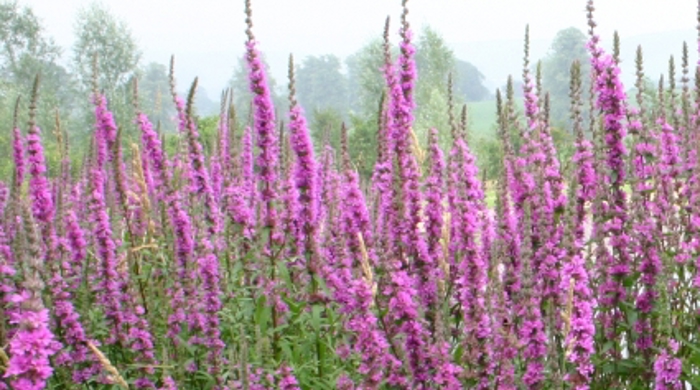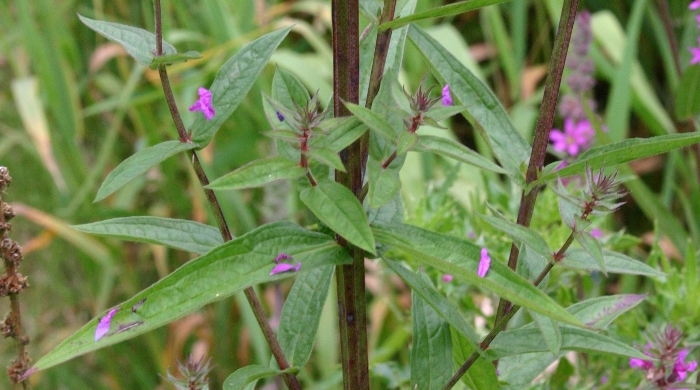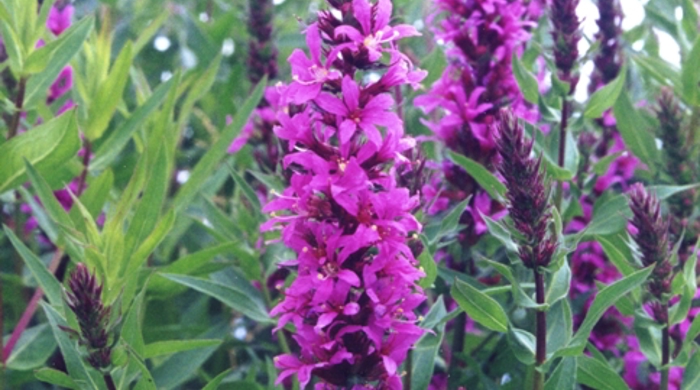Lythrum salicaria
Purple loosestrife
Family: Lythraceae
Origin: Africa, Australia, Eurasia
Regional Pest Management Plan (RPMP) status
- National Pest Plant Accord Species
General description
Erect, perennial herb < 3 m tall. Roots are fibrous and form dense surface mats. Stems are usually many-branched and square. Leaves are < 12 cm long, lanceolate-ovate, narrow, opposite or in whorls and clasped around the stem. Flowers are purple and borne in dense, < 25 cm long flower spikes in December-February. Seeds are minute, numerous and borne in blackish capsules.
What you need to know
To help protect our environment:
- You must not breed, distribute, release or sell purple loosestrife. As purple loosestrife is a National Pest Plant Accord species, these restrictions apply within the Auckland region and across the whole of New Zealand.
Habitats
Still or slow-moving water bodies, wetlands, riparian margins, lakes, ditches, reservoirs.
Dispersal
Seeds dispersed by wind, water, waterfowl and soil movement. Vegetative spread from root fragments. Human-mediated dispersal through dumping of garden waste, deliberate plantings and movement of contaminated machinery, vehicles and clothing.
Impact on environment
Forms dense stands, outcompeting and displacing native vegetation. Impedes waterfowl and access to waterways.
Control
Site Management
Follow up treated areas 3 times per year. Encourage natural regeneration of native plants or replant treated areas where possible after 2-3 treatments to establish dense ground cover and minimise reinvasion.
Recommended approaches
Physical control
Method: Dig out.
Plant parts requiring disposal: All parts.
Disposal options: Remove to greenwaste or landfill if practical.
Biocontrol
Biocontrol is currently not available for this species.
Community agrichemical control recommendations
No qualifications: Foliar spray with 100ml glyphosate green per 10L of water.
Certified Handler/Experienced agrichemical user: Foliar spray with 100ml glyphosate green per 10L of water and 20ml penetrant.
Caution: When using any herbicide or pesticide please read the label thoroughly to ensure that all instructions and safety requirements are followed.






